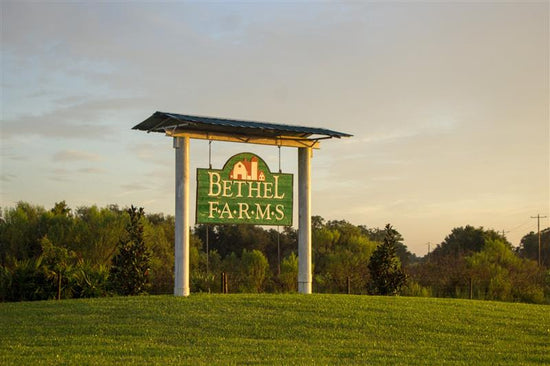
How to Drought-Proof Your Lawn Now
Jamie TedderSpring in Florida brings warmer temperatures, longer days, and occasional rain showers—the perfect conditions for lawn recovery after the previous seasons. As the season shifts, grass grows more actively again, and homeowners turn their attention to lawn maintenance. However, if your lawn has struggled through dry spells or has patches that failed to recover, now is the time to take proactive steps to establish a drought-proof lawn.
A strong foundation is a key factor in protecting your lawn against future drought. If your lawn is due for significant repairs, sod installation is an excellent solution that provides immediate coverage. Because sod consists of mature grass, it integrates quickly into the soil, contributing to better drought tolerance. Instead of starting from seed, sod establishes faster, allowing your lawn to become more resilient to dry conditions.
Start with Drought-Tolerant Grass
Florida’s dry season typically lasts from November through May, with water levels dropping significantly during this period. While summer is usually the wet season, recent years have brought drier-than-usual conditions, leading to water restrictions across several state water management districts. With unpredictable rainfall and increasing conservation efforts, you should take proactive steps to maintain a healthy lawn with minimal water use.
Choosing the right grass type is essential for a drought-resistant lawn. Some grass varieties thrive in areas with unpredictable rainfall and water restrictions, making them better suited for long-term sustainability.
Warm-season grasses, such as bermudagrass, are excellent options for drought-prone areas. Bermudagrass has a deep root system that allows it to access moisture stored deeper in the soil, reducing its reliance on frequent watering. Its dense coverage and vigorous growth also help it recover quickly from damaging dry conditions. BIMINI® Bermudagrass, an improved variety, offers even greater drought tolerance with fine-textured, soft blades and a lush green appearance.
Factors to Consider When Choosing a Drought-Tolerant Grass
When selecting grass for your lawn, consider the specific conditions of your landscape to ensure it remains healthy with minimal watering.
Excessive Heat and Drought – If you live in an area with prolonged dry spells, choose bermudagrass. This grass can survive without supplemental watering and maintain its resilience.
Clay Soils – Lawns with heavier clay soils require grass that can tolerate periods of excessive moisture followed by dryness. Bermuda is also an excellent option because of its adaptability to different soil conditions.
Sun and Shade – Bermudagrass can tolerate high heat better than other warm-season varieties. It thrives in direct sunlight and maintains its dense, green appearance even in extreme conditions. Meanwhile, if your lawn has areas with partial shade, St. Augustine is a better option. Known for its shade tolerance, it can adapt to lower light conditions while providing a lush, green lawn. However, remember that it requires more watering than Bermuda in dry conditions.
Foot Traffic and Usage – Consider how much activity your lawn will experience. Bermudagrass is a durable choice that can handle heavy foot traffic while maintaining density, making it ideal for families and pets.
In addition to selecting drought-tolerant grass, proper lawn maintenance practices—such as mowing at the right height and using mulch—can further improve water retention and help your lawn stay healthy during dry periods.

Lawn Care Practices for Increasing Drought Tolerance
Once you've established a lawn with a drought-tolerant grass variety, ongoing maintenance will help keep it resilient. The following practices can improve drought resistance and overall lawn health:
Water Deeply But Less Often – Encourage deeper root growth by watering your lawn deeply rather than providing frequent shallow watering. This helps grass access moisture stored deeper in the soil, making it more drought-resistant.
Follow Proper Watering Guidelines – Apply 1 to 1.5 inches of water per week, spread over one to two watering sessions. This approach hydrates the roots effectively without oversaturating the soil, preventing water waste.
Mow at the Right Height – Maintaining the proper mowing height helps your grass retain moisture and develop deeper roots. For warm-season grasses, the recommended height ranges from 1 to 4 inches, with bermudagrass thriving at lower mowing heights, while other varieties, like St. Augustinegrass, perform better when kept taller. Taller grass blades provide more shade to the soil, reducing evaporation and promoting deeper root growth.
Fertilize Wisely – Use a slow-release fertilizer to encourage steady, healthy growth without pushing excessive top growth that requires more water. Reduce or postpone fertilization during drought to prevent further stressing the grass.
Monitor Conditions and Adjust Watering If Necessary – If your grass shows signs of heat stress—such as turning a bluish-gray color or failing to recover from footprints—apply supplemental water to prevent damage. However, if a drought is prolonged and restrictions are in place, it may be best to allow warm-season grasses to enter dormancy. Dormant grass will turn brown but can recover when rain returns.

Long-Term Strategies for a Drought-Resistant Lawn
Achieving a drought-proof lawn requires a combination of strategic grass selection, proper irrigation, and ongoing maintenance. Implementing the right strategies now will help create a low-maintenance lawn that stays green and resilient even in dry conditions.
Investing in drought-tolerant grasses like BIMINI® Bermuda can help keep your lawn lush with minimal watering. By monitoring and adjusting your lawn care practices—such as frequent mowing at the correct height, applying mulch to retain moisture, and optimizing irrigation schedules—you can improve your lawn's ability to withstand drought.
For homeowners looking for immediate results, Bethel Farms offers high-quality sod grass for sale. These sod options provide instant coverage, helping to establish a healthy lawn quickly. For smaller repairs, grass plugs are also available for a seamless recovery. Whether you're starting fresh or repairing a struggling lawn, Bethel Farms has the perfect solution to help you achieve a beautiful, drought-proof landscape.
Upgrade your lawn with drought-tolerant sod from Bethel Farms today!

